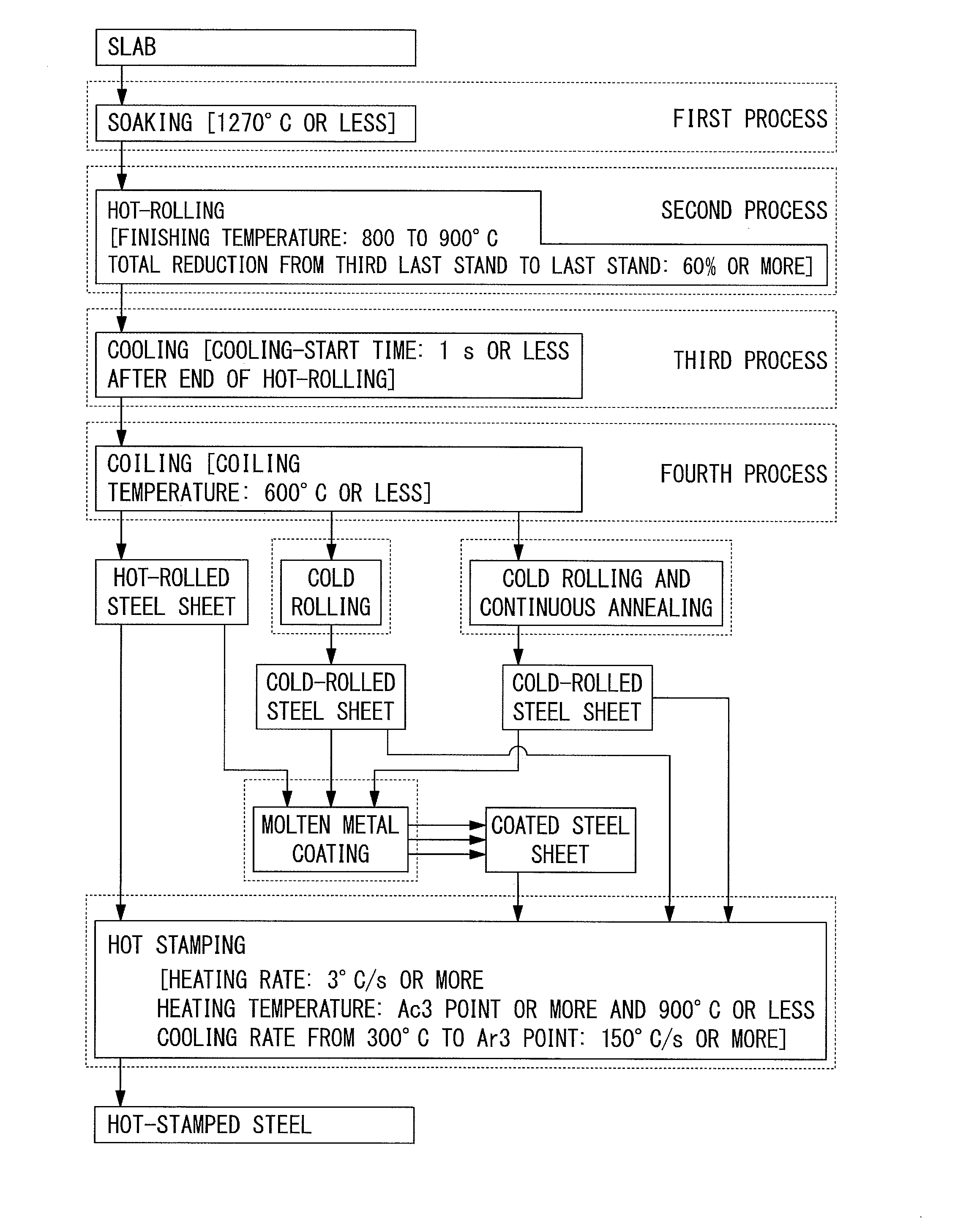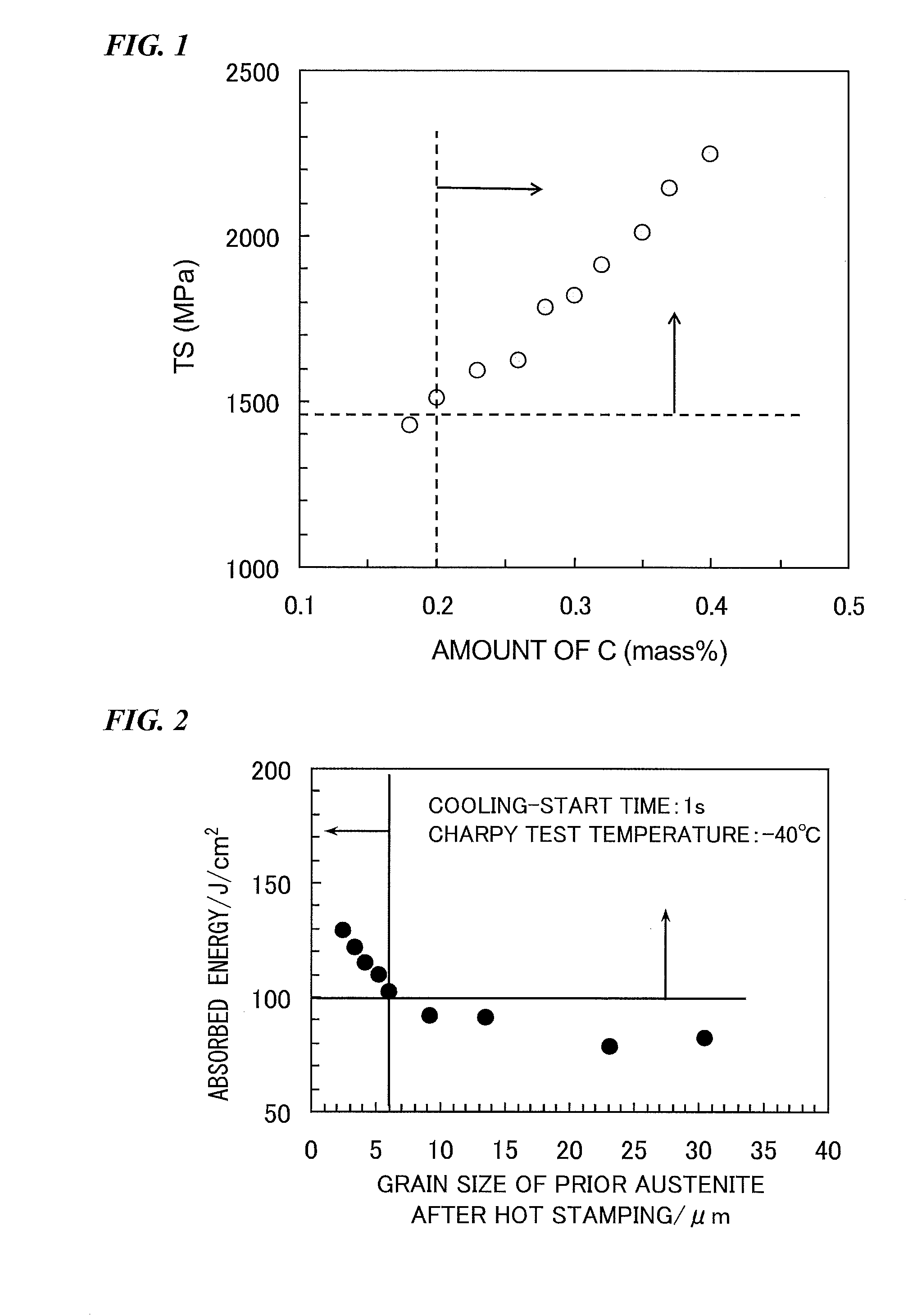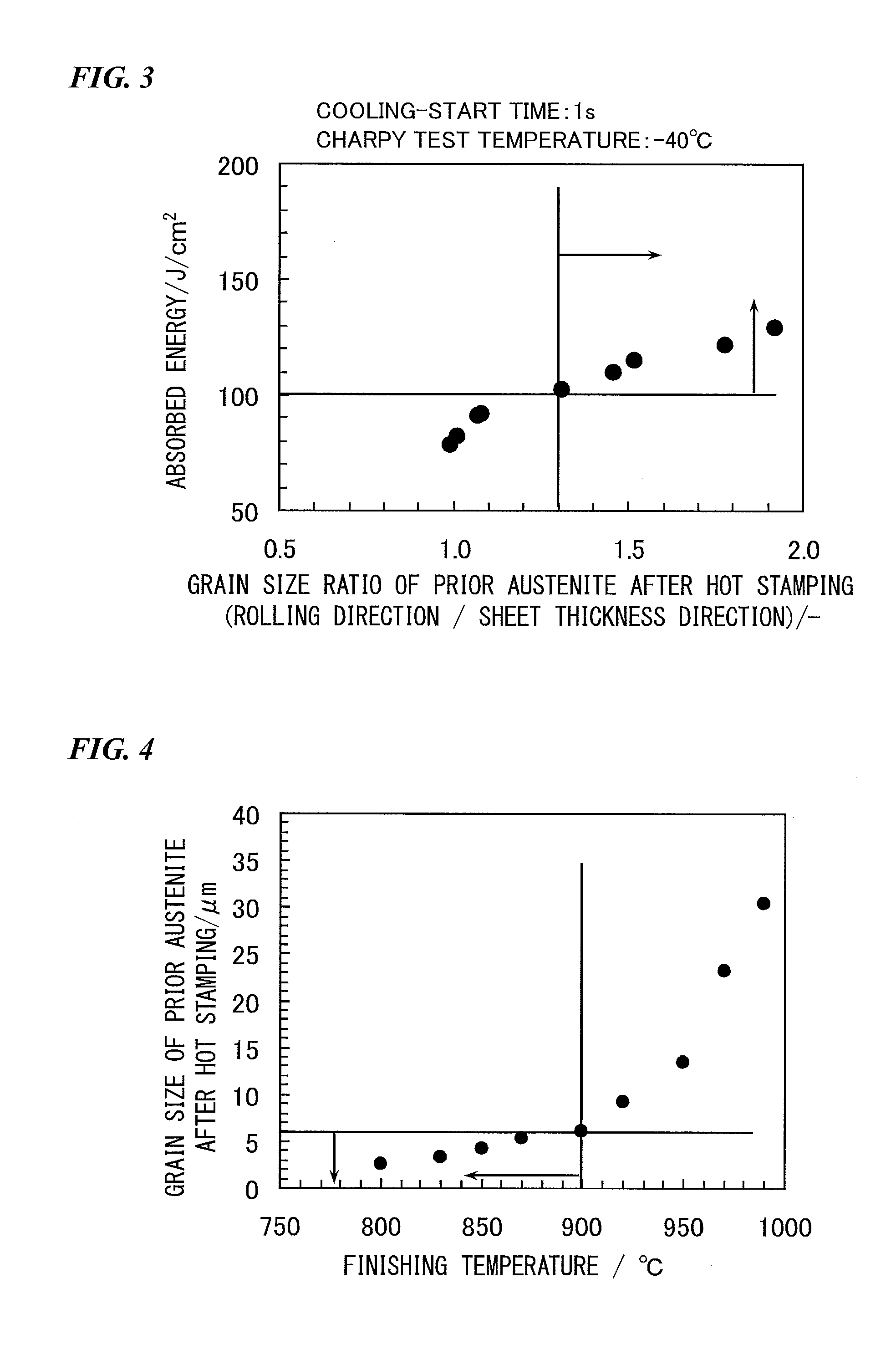Hot-stamped steel, method of producing of steel sheet for hot stamping, and method of producing hot-stamped steel
- Summary
- Abstract
- Description
- Claims
- Application Information
AI Technical Summary
Benefits of technology
Problems solved by technology
Method used
Image
Examples
example 1
[0083]Steels having the chemical components shown in Table 2 (Steels A to Y) were supplied from a converter, cast into slabs, and hot-rolled under predetermined hot rolling conditions (heating temperature: 1220° C., finishing temperature: 870° C., total reduction applied from the third last stand to the last stand: 65%, time from the end of finish rolling to the beginning of cooling: 0.5 seconds, coiling temperature: 600° C.), thereby manufacturing 3 mm-thick hot-rolled steel sheets. For Steels A to L and Steels U to Y, the prior austenite grain sizes in the hot-rolled steel sheet were 6 μm or less, and the dimensional ratios of the length of prior austenite in a rolling direction to the length of prior austenite in the sheet thickness direction were 1.3 or more. After the hot-rolled steel sheets were cold-rolled so as to obtain 1.4 mm-thick cold-rolled steel sheets, continuous annealing was performed under the conditions shown in Table 3, and a coating was performed after the annea...
example 2
[0085]For Steels I, U, and Y in Table 2, 2 mm-thick hot-rolled steel sheets were obtained under predetermined hot rolling conditions (heating temperature: 1250° C., finishing temperature: 880° C., total reduction applied from the third last stand to the last stand: 60%, time from the end of finish rolling to the beginning of cooling: 0.8 seconds, coiling temperature: 550° C.), and then pickled. A heating and cooling treatment was performed in which the hot-rolled steel sheets were heated to 880° C. in a heating furnace as they were, the temperature was maintained for 120 seconds, then, the steel sheets were inserted between dies having a water supply inlet through which water was supplied from the surface and a water drain outlet through which the water was discharged, and was cooled to room temperature through spraying of water. Furthermore, the same heating and cooling treatment was performed on the hot-rolled steel sheets on which galvanizing (GI), galvannealing (GA), or aluminiz...
example 3
[0086]Steel I in Table 2 was subjected to hot rolling under the hot rolling conditions shown in Table 5 and, subsequently, cold rolling at a reduction of 50%. The steel sheet was heated to 850° C. at the heating rate shown in Table 5, then, inserted between dies having a water supply inlet through which water was supplied from the surface and a water drain outlet through which the water was discharged, and was cooled to room temperature through spraying of water. Meanwhile, as a result of observing the microstructure of a cross section using an optical microscope, the steel sheet subjected to the thermal history included 98% or more of martensite in terms of area percentage. For the obtained steel sheets, the same material properties as in Example 1 were evaluated, and the obtained results are shown in Table 5. For toughness, Charpy tests were performed at −120° C., and steel sheets (after being subjected to the thermal history) for which an absorbed energy of 85 J / cm2 or more was o...
PUM
| Property | Measurement | Unit |
|---|---|---|
| Temperature | aaaaa | aaaaa |
| Temperature | aaaaa | aaaaa |
| Temperature | aaaaa | aaaaa |
Abstract
Description
Claims
Application Information
 Login to View More
Login to View More - R&D
- Intellectual Property
- Life Sciences
- Materials
- Tech Scout
- Unparalleled Data Quality
- Higher Quality Content
- 60% Fewer Hallucinations
Browse by: Latest US Patents, China's latest patents, Technical Efficacy Thesaurus, Application Domain, Technology Topic, Popular Technical Reports.
© 2025 PatSnap. All rights reserved.Legal|Privacy policy|Modern Slavery Act Transparency Statement|Sitemap|About US| Contact US: help@patsnap.com



